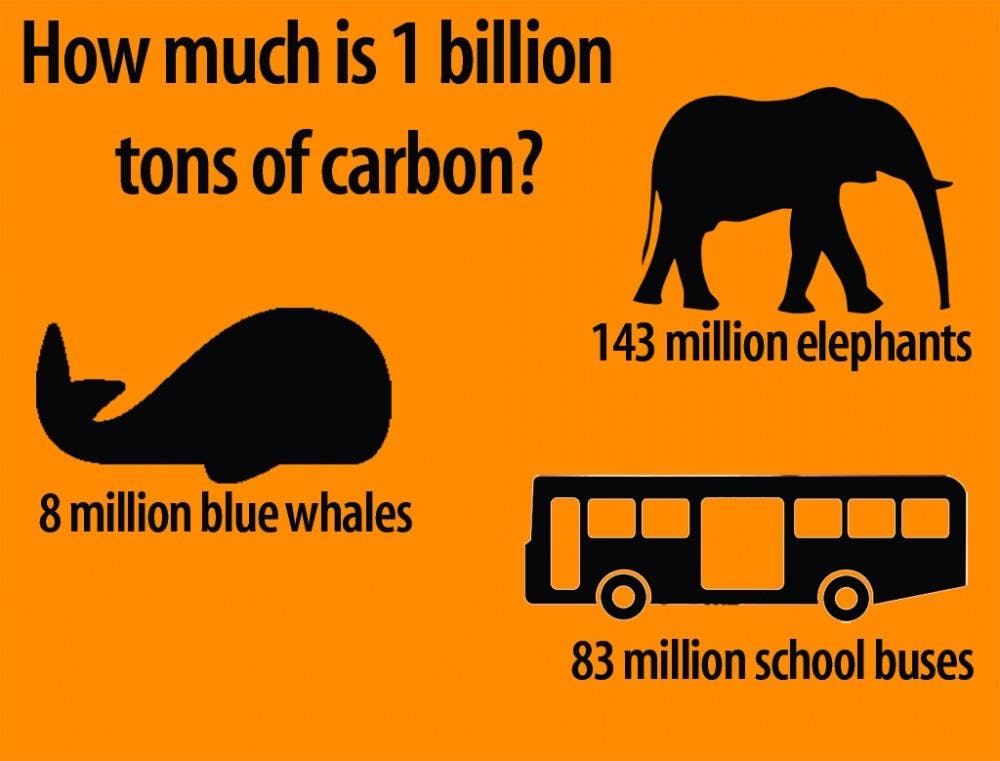Forest and oceans are not the only carbon sinks out there.
Duke researchers found that coastal ecosystems store significant amounts of carbon dioxide, and that coastal habitat destruction releases 0.15 to 1.02 billion tons of carbon dioxide each year. The findings, published online in PLOS ONE, show that the emissions from loss of coastal habitat such as mangroves, sea grasses and salt marshes are equivalent to up to one-fifth of the carbon emissions caused by deforestation worldwide—amounting to $6 to 42 billion in annual economic damages.
These findings are guiding policy changes by the United Nations to protect coastal environments.
“Although there is still a high range of uncertainty, we were greatly surprised by the magnitude of carbon stored in coastal ecosystems,” said Brian Murray, director for economic analysis at the Nicholas Institute for Environmental Policy Solutions. “On the high end of our estimates, emissions resulting from coastal habitat destruction are as large as carbon dioxide emissions produced by the world’s fifth largest emitter, Japan.”
Carbon emission estimates were derived from “blue carbon,” a special type of carbon captured by marine ecosystems from the atmosphere and stored in anaerobic soil below mangroves, sea grasses and tidal marshes, said Linwood Pendleton, acting chief economist at the National Oceanic and Atmospheric Administration and director for ocean and coastal policy at the Nicholas Institute.
When these wetlands undergo habitat destruction or degradation, sediment layers begin to erode. Once blue carbon is exposed to air or ocean water, large amounts of carbon dioxide are released into the atmosphere over time.
“Research in carbon emissions has primarily focused on quantifying carbon amounts in various ecosystems,” Pendleton said. “We wanted to examine what happens when these ecosystems are disturbed and stored carbon is released and whether protocols and methodologies could be implemented to offset carbon emissions.”
Pendleton’s goal has not gone unheard—results from this research are currently being utilized to negotiate long-term coastal habitat conservation policies with the United Nations climate change panel, Murray said. In fact, the United States government has classified “blue carbon” as an important coastal resource that should be very carefully monitored, and conservation protocols for coastal habitats are being put in place in parts of California, New England and Europe.
Both Murray and Pendleton said that providing economic incentives to companies who leave coastal habitats intact and aim to reduce global carbon emissions may be most effective to conserving these fragile ecosystems.
“Many people don’t know that blue carbon provides numerous benefits—they provide nursery to fish, serve as habitats for different kinds of birds and filter pollutants from coastal waters,” said Pendleton. “Working with international agencies to create complementary markets and policies for blue carbon habitats may help preserve these benefits and effect reductions in amounts of carbon emission.”
Using these results as a baseline, Murray hopes to further characterize blue carbon emissions in various coastal habitats throughout the world and narrow uncertainty surrounding the magnitude of carbon emissions caused by coastal habitat destruction.
For instance, Murray said, Indonesia, Mexico, Brazil and India have sizeable coastal lands rich in mangroves and tidal marshes.
“I want to examine carbon emissions in these countries locally and help them develop environmental policies targeting coastal habitat conservation and carbon emission reduction,” Murray said.
Get The Chronicle straight to your inbox
Sign up for our weekly newsletter. Cancel at any time.

